August is a time to relax. This month I just want to share with you a personal experience: one wonderful summer day of clicker training horses. Beautiful Irish horses. As usual, any phrase that's underlined is a link to more information on that topic. But do follow those up later. I just had to tell you everything, and it turned out to be all one story. So print it out and take it to the beach.
Happy clicking.
Karen
"It's the pinnacle of a sparkling career," my friend Joan said, "working in a horse barn in Ireland." It does seem a little coals-to-Newcastle, shipping an American grandmother to Ireland to teach people to train horses, since the Irish have been training horses as well as or better than anyone else for a thousand years or so. But clicker training was a new idea to them, and they'd asked me to come.
TAGteacher Theresa McKeon and I were in Ireland at the request of the Festina Lente Foundation, which has premises just outside Dublin. They teach people with disabilities to work with horses and in horticulture, and to become employable. They also run a large riding school, giving lessons to children and adults. We had spent several days participating in a Festina Lente conference on TAGteach: using the marker signal to teach people. Festina Lente staffers had been using TAGteaching with considerable success with their human students and presented some wonderful case studies at the conference. Theresa and I gave talks and workshops on TAGteaching, clicker training, and learning in general.
The day after the conference, we went out from our hotel in Dublin to the foundation's riding school. Theresa was scheduled to work on TAGteaching with the riding coaches and their classes in the arena all day. I'd agreed to demo some clicker training with horses.
I did bring some equestrian experience to the job. Many years earlier I had owned a herd of Welsh ponies, and trained dozens of them, many from birth onward. Of course I didn't do this all by myself. I had a group of volunteer children, ages 10 to 14, who took a mix of old broodmares and new untrained two-year-old ponies, taught them and rode them for a year or so, watched the youngsters go to new homes as kid-proof, ride-and-drive-safe ponies, and then started again with another group. I taught the kids how to use positive reinforcement and a marker signal as we did with dolphins. Then I thought up assignments, and they did all the work. Easy for me! And the kids called it "playing Ponies," as if the whole thing were a game. Which of course it was.
The children were great, and we all loved working with the horses. They are beautiful, they are amusing, and when you train them purely with reinforcement you find out that they have very interesting minds. It had been years since I'd "played Ponies." Now for a day I would once again have a chance to train some horses. My way. I was excited.
Naturally, Jill Carey, director of Festina Lente, wanted me to begin with their biggest problem. It's not the ideal place to start learning clicker training, in my opinion, but people always want the problems solved first, and I accepted that. In this case the problem was a nine-year-old Connemara pony named Bob. They'd acquired him a couple of months earlier from an old lady who loved him dearly but who was afraid of him. In fact she was so reluctant to handle him that he'd spent the last few years of his life turned out to pasture, with no company and nothing to do, a very lonely life.
However, it was clear to see why his owner had banished him. He had already annoyed so many people at Festina Lente that he was now called Bad Bob. Interestingly, he had also annoyed quite a few horses; he apparently had no horse manners either, and was wearing several dings and nicks as proof.
Clodagh Carey, Jill's sister and the head of the riding school, took me to see Bob. Jill and Clodagh are warm, lively, pretty women, one dark, one fair, who seem to enjoy life thoroughly; but Clodagh did not enjoy Bob. What she particularly disliked about him, and wanted me to fix at once, was his habit of biting people in the rump while they were bent over cleaning out his hooves.
Like my Welsh ponies, Connemaras are quite big, about 13 hands high. Being a small woman I can ride one quite comfortably, and they are perfect for older children and young teens. Bob was said to be very nice to ride, and quite manageable under saddle; thus he should have made a fine addition to the riding school's mounts for children. The trouble he gave on the ground, however, was making them think twice.
Clodagh went into the stall with a halter and her grooming tools, while I leaned over the door and had a look at the pony. He was dazzlingly pretty: a dark bay (brown) with a black mane, tail, and legs. His flanks were dappled with golden circles or spots, like a child's painted rocking horse. He had big eyes, small ears, a beautiful lush mane and tail, dainty little feet, and a body all curves and graces, like an Arabian horse.
He was also, I thought, wearing a rather pleasant expression, but as soon as Clodagh tried to brush him he danced around, back and forth, left and right, swinging his teeth warningly in her direction. She put the halter on and tied him up short to a ring in the wall. He swiveled from side to side and fought the lead line, trying to get a nip at her as she picked out his hooves. When she finished with one side and went to the other, the horse swung himself next to the wall. Clodagh moved into the gap between horse and wall and told him "Get over," poking him in the ribs. It made me uneasy; an aggressive horse in that situation can mash you against the wall, and it's a hard position to get out of. But Bob was not dangerous, just naughty. He did move away, heavily and reluctantly, after she'd shoved him a good deal, and Clodagh threw me a "See what we have to put up with," look. Meanwhile Bad Bob's pretty little feet kept up a samba, and sometimes he pawed at the floor, with great shoulder-high impatient sweeps of a front hoof that somehow JUST managed to miss hitting Clodagh's leg or foot on the way by.
Furthermore, when Clodagh turned away from him for a few seconds, Bob began biting at the lead line that tied him to the wall, studying the knot with eyes and ears and plucking at different parts of it with his mouth. "Look, he's trying to untie himself!" I exclaimed. One of my Welsh pony stallions had discovered how to do that. Clodagh sniffed, and I agreed, the horse that can untie knots is a big nuisance...but smart…
So the training began. Jill had assembled quite an audience on my side of the stall door: some foundation staff, a few guests and board members, a television cameraman from Dublin, and a volunteer crew of about a dozen or more girls, ages 10-14, who work in the stables in a summer program, each neatly dressed in riding pants and navy blue Festina Lente shirts.
I decided to start with Alexandra Kurland's excellent first step, teaching a horse to touch a target, in this case a little blue traffic cone someone found for me in the stables. You can do this with the horse in its stall and you outside, so if he gets pushy or excited you can safely step out of reach. Meanwhile the horse learns what the clicker means, how to make you click, and how to control his own behavior instead of just reacting to yours.
I had a pocketful of alfalfa pellets, a favorite horse treat; and of course a clicker. I asked Clodagh to come out of the stall. Bob's head and neck came over the stall door after her. He got a click and a treat from me, saw where the treat came from, and instantly began trying to get into my coat pockets. I backed a way a little, and held out the target. Sniff, click, treat.
In three clicks he was aware of the target and touching it on purpose. In ten clicks Bob could reach for it, move toward it, and bump any part of it with his nose; he was now target-trained. In fact he liked his target so much that if I tucked it under my arm or behind my back he began mugging me—reaching for me with his mouth and bumping me with his nose—trying to get at the target and get clicked.
The next step therefore would be to teach him to keep his nose and teeth to himself, out of my pockets and away from me. I'd started with a Kurland method of feeding him at arm's length so he had to back up and move away from me to get his treat; but I didn't think he had made the connection yet. That's Pavlovian, or classical conditioning: you associate two stimuli, in this case the food and the location "away from me," by repeatedly pairing the two. But classical conditioning is slow, and takes many repetitions. The heck with that; I wanted Bob to mind his manners NOW . So I started clicking him whenever he happened to swing his head away from me. In three or four clicks he was deliberately swinging his head away, hearing a click, and swinging it right back to get his treat.
Now it seemed to me he was taking his treat (two or three tiny pellets) nicely, instead of grabbing it. Maybe he wasn't going to mug me again; maybe I didn't have to back up any more. I tested him by standing quite still. He nibbled at my treat pocket flap, but very gently, and then stopped. You could almost hear him think, "Oh, right, I remember," and he swung his head away from my body. Yup, you got that right, pony; click, treat.
To get him to keep his head away for a while, not just for one nanosecond, I started offering the target when he was standing with his head away from me. Now, instead of swinging his head away and then right back at me he had to take his head away and then wait for the target. That worked like a charm. "Hold still, don't mug the American lady, and she'll give me the target. Bump the target and she's bound to click and treat." Of course by delaying holding out the target, a second more each time, I could teach him to wait longer and longer.
NOW we had "Keep your head away" as an operant behavior, one the horse was doing consciously and deliberately. Furthermore, I'd shaped the behavior I was after by reinforcing it with the target (a cue) instead of just the click and treat. Strangely enough, that makes the new behavior more reliable more quickly. It's counter-intuitive but very powerful; therefore a nice lesson for the audience, too.
This took perhaps fifteen minutes. The whole time, Bob's pretty feet were moving impatiently under him; he was learning a lot and working hard but he was also keeping up his samba. Now, suddenly, he lowered his head a little and stood still, with his ears, for the first time, relaxed.
"Oh now that's a novel idea," I said to him sarcastically, "Standing still," and I clicked and treated him for that. It was the first time I had spoken to him, and it wasn't for his benefit, just for mine. But I knew it was time to stop. He was tired and so was I, or I would not have been sarcastic.
I told the camera we were done for now. The kids were full of questions and I was happy to talk, but first I shooed everyone out into the stable yard, to give poor Bob a well-earned rest.
The new mare
One of the Festina Lente coaches had just bought himself a new competition prospect, a three-year-old mare who, he told me, presented another problem: she was hard to catch and halter. Would I consent to work with her? Sure, why not. I leaned on her stall door and watched with interest as Helen Keogh, one of the staff, went in to halter her. The mare pulled away and lifted her head toward the rafters, but Helen deftly slipped the halter on anyway. Jim, one of the TAGteaching riding coaches, stepped into the stall and quickly picked out the mare's hooves. (At Festina Lente every horse must have its feet cleaned before leaving its stall. Thus not a speck of manure sullies the stable yard or offends the public eye. If some horse does commit a nuisance in the yard or the arenas one of the uniformed girls is instantly there with broom and pan to clean it up.)
Helen led the mare out into the stable yard. She was a beautiful hunter/jumper type, dark brown, and very tall; I couldn't see over her back. The children and staff started to gather around, but much too close, I thought. I moved them all well away to the side. In fact I made sure that the whole stable yard in front of the mare was empty. She was new and she was nervous. If horses panic and bolt they go straight. Now if she lost her courage at least no one would get run over.
While Helen held the mare's lead rope I introduced her to the clicker. She did not seem to know how to eat food from a person's hand but she figured it out. I made sure that the first couple of clicks were absolutely simultaneous with the food-to-mouth so she quickly acquired that association. (Read more about how to clicker condition horses in Lads Before the Wind).
Now I tried another Kurland tactic: Question the horse. May I touch you on the shoulder? Yes? Click/treat. May I touch you on the leg? Yes, click/treat. May I touch you on the side of the neck? Yes? Click, treat. May I touch you on the neck near your ears? No, please don't, she answered, pulling up and backwards away from my hand.
I tried that again a couple of times, moving my hand lower on her neck, click, treat, and then back up toward her ears, oops, no click, no treat. Not much progress. Hmm. What you need, for speed, is for the animal to be doing something you can react to positively, NOT for you to be doing something the animal has to react to.
I moved on to another Kurland plan: get this mare to lower her head, which might put her head within reach and which also seems to make horses feel calmer. One recipe is to lay your hand on the horse's poll, the flat place right behind the ears, and keep it there until the horse moves its head downward; then click and treat. Well, this mare was too flinchy for that, and besides, to reach her poll I'd need a ladder.
What about just free-shaping head moves downward? Clicking little random movements?
As I thought about that, the mare happened to lower her head a little and I clicked during the move. Treat. Wait. Again she dropped her head a few inches, and I clicked it. Now she dipped her head on purpose. Three clicks later her nose was on the ground and she was snuffling around for treat pellets she might have dropped by accident. Hey, that was easy! I thought it was a good place to stop. Quit when you've made progress and had some success. Helen turned the mare around and took her back to her big comfortable stall.
Jill Carey came over to me. "I'm glad you did something with the new mare," she said. "I feel so sorry for her, she's bewildered and away from home for the first time, and the pony in the next stall is making faces and being terribly rude to her. Yesterday she just hid in the back of the stall and never even looked out her door."
"Well, she's looking out her door now," I said. Indeed, she was hanging her head over the stall door, looking all around, studying the stable yard and the other horses with interest. Furthermore, she was lolling her long tongue out of her mouth and pulling it back in again in a most inelegant way. I laughed. "She's remembering about the food," I said, "and about earning all those treats! This stable yard looks like a pretty nice place, all of a sudden!"
But had she learned anything else? A bit later I walked over to the stall door. She didn't back away. I laid my hand firmly on her neck, up near the ears, just where I'd been trying to go before. She started to pull away, hesitated, and then moved forward and deliberately put her neck against my hand. Click!
Might not look like much to a bystander. But I was thrilled. She could already use her new understanding to overcome her fear, and she had just given me a behavior that had not actually been clicked. Way to go, mare!
Bad Bob revisited
After lunch, at Jill's request, I spent an hour or so playing the Training Game with all the little girls; they were clever at it, too. Then Jill suggested we work with Bad Bob again, but in the outdoor arena, in the sunshine. Good, he might like that; and I trusted him a bit more now, too. He was more likely to want to earn clicks than to want to take off for the next county.
I decided that the behavior for this session would be "stand still while you are being brushed." It wasn't clear to me why Bob fidgeted so, during grooming and handling. Was it really uncomfortable for him? Seemed unlikely, since most horses love being groomed; in fact when we clicker train foals that are too young to eat solid food we use scratching or brushing as the reward (there's a great sequence on this in Kurland's introduction video).
Maybe the dancing around was one of those accidentally-owner-reinforced behaviors like so many bad behaviors of pet animals. In fact, it didn't matter how it began. We could at least start to get rid of it. Jim Mernin brought Bob from the stall into the arena and held him by the lead line. Clodagh would brush him, and I would do the clicks and treats. The children gathered along the fence to watch.
I started by clicking for standing still during one stroke of the brush, and then two. Bob reached for me with his mouth once or twice in the beginning, and I thought I would have to go back and review "keep your head away," but after a few clicks he settled down and just waited politely for each treat to be handed to him.
I asked Clodagh to stop brushing when she heard the click, and that helped a lot. Now Bob had two kinds of rewards for the click: a food treat arrived, and the brushing went away. Soon he could stand still for five or six brush strokes on his right side, and Clodagh was expanding the area she brushed, from his neck to his shoulder to his back and his rump. It was hard for him to just stand there. A couple of times one foot moved just as I clicked. Once, when the brushing stopped, he twitched his skin all over, the way horses do when a fly lands on their backs. "Tickles, does it?" I said, wondering if that was really so.
I moved Clodagh and her brush to Bob's left side and the war-dance started up again. We had to go back to two strokes just on the neck, and review the training we'd done on the other side; but it did go faster the second time. Once during the session I asked Jim to give the pony a mental break by walking him around a little. Perhaps that helped; it certainly didn't hurt. Soon we were up to eight brush strokes on either side, and then more. "Thirteen!" Clodagh exclaimed. That seemed like a lot, to me, so on the next try I clicked after just two strokes of the brush.
One of the beauties of clicker training is that it sometimes gives you remarkable glimpses of what's going on in the animal's mind. Now Bob stared at me with an expression I had never seen before on a horse: utter surprise. His ears were up, he was looking me straight in the eyes, and his face clearly said, "What! Just TWO? I can't believe you did that!"
"He's surprised, did you see that?" I said, laughing, to the watching people. It's easy to startle a horse; but this was not alarm: this was just pure amazement. That expression told me two things: first, he thoroughly understood the game we were playing. Second, in his past experience, things usually just went on and on getting worse, not better. What I wanted to do was to pat Bad Bob (which at present he would probably hate) or throw my arms around his neck, or give him a month's supply of alfalfa pellets. What I did was smile, and pay him his treat. Poor thing. Maybe Festina Lente will turn out to be a better place for you.
And let's begin, I suggested, by changing his name. Why add to the bad karma he already has? So he went back to his stall temporarily called Bonnie Bob. Maybe he will become Robin or Bobbin or something else suitable for a nice friendly pony; because I'm pretty sure there is one in there somewhere. He has become Clodagh's special project now.
The children
Jill had one more trick up her sleeve. She began with a question: did I think the girls could try some clicker training with the horses? Of course. Three new horses were immediately led into the arena: a regular riding school horse; a beautiful gray Irish hunter I coveted on sight (I have a weakness for grays) and Rosie. Rosie was something totally new to me. She was what's called a cob; easy to ride but sturdy enough to pull a cart. She was a filly, just two or three years old; a pinto, white and brown, with a naturally arched neck, a pretty face, and beautiful white "feathers" on her legs; fetlock hair that started almost at her knees and fell so thickly you could hardly see her hooves. Jill told me that she had spotted Rosie, tethered on a bit of wasteland on the other side of the high garden wall, and bought her from some gypsies, or travelers as they say in Ireland . And the day after she bought Rosie, on the other side of the garden wall there were six more just like her.
While the horses were coming in, I found three targets: Helen had one she'd made herself; I had a P.E.T target in my purse, and the girls could have the blue traffic cone they'd already watched me use. I divided them up into three groups, six or more children in each group. While adult staffers held the horses' heads, each group would teach their horse to touch the target. I invented a procedure to give everyone a turn: "One girl offers the target and does the clicking; another girl treats. You each get five clicks, and then the trainer becomes the feeder and someone else gets five clicks. When everyone has been both the trainer and the treater, we'll see how you're doing."
Hey, just like my Welsh pony days! I tell the kids what the day's assignment is, and the kids train the ponies. Easy for me! I relaxed and chatted with the onlookers, and learned that Helen was still marveling at how long Bad Bob had been able to stand still.
When I saw that everyone in the three groups seemed to have had at least one turn as trainer I went round and gave a test. The horses were touching the targets, but would they follow a moving target? Sure enough, as I held the target out and started forward each horse pointed its nose at its target and came along with me. Brilliant! Great job, girls.
I thought that was the end of it, but Jill let them go on. Now each group of girls collectively thought up a new behavior and trained it. The grey hunter learned to walk backwards when the target was placed behind his chin. The school horse learned to circle, if I recall correctly. And Rosie was taught, with the target, to stick her nose both down to the ground and straight up in the air as far as it could go.
We had a debriefing, with the girls all in a line. There seemed to be more of them than ever, now there were eighteen at least. "What do you want to train the horses to do next?" I asked. They thought about that. Then Megan said, "Stick their tongues out." Yes, all the girls seemed to think that would be feasible. Fine with me, I said. (I must say, later on when I envisioned a whole stable full of horses looking over their stall doors with their tongues hanging out, I hastily e-mailed Jill. If the girls did that, they should be sure to teach the horses to put their tongues back in again, too.)
The outcome
So what was the score?
I had a blissfully happy day of "playing Ponies."
Bad Bob had learned that sometimes it pays to try to be good. Let's hope it leads to a total reform.
The new mare had learned to be less afraid of her new world, and to take on some responsibility for her own well-being.
Three other horses learned to follow a target, and are undoubtedly hoping to play the clicker game again.
And there are now approximately eighteen new young clicker trainers in Ireland.


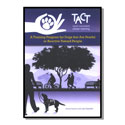
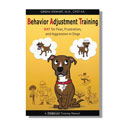
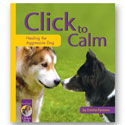
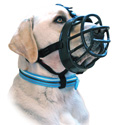
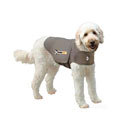

Great Info!
The barn that I train at would LOVE this idea! I've got to share it!
Bad Bob
I have a horse that would like to do the 'Target Game'! Theres also movies by Alexrandra Kurland (I dont know if thats how you spell her name!)
Bad Bob
The Festina Lente Foundation is an insparation in Ireland and as a new stable manager I aim to progress in Co.Kerry Southern Ireland in a similar direction. I too visited Festina lente and met Jill we spent the day there and were shown clicker training and TAGteach which was amazing to see I am just starting to try this method out in my stables I have witnessed only too often bad tempered owners "hitting" their horses to "give them some manners" and really appreciated Jill's time and her staff there in giving me an insight into something that seems so simple yet so very effective. comment from The Listowel Equestrian Center Ltd (e-mail wendybrosnahan [at] eircom [dot] net)
Bad Bob is an inspiration!
Every now and then we get a horse at the barns who arrives with fears and bad habits. I can see where clicker training can surely help them to find a better, more positive way to find their place in the barn and their new "herd"! I enjoyed this account very much! Thanks for sharing!
Post new comment